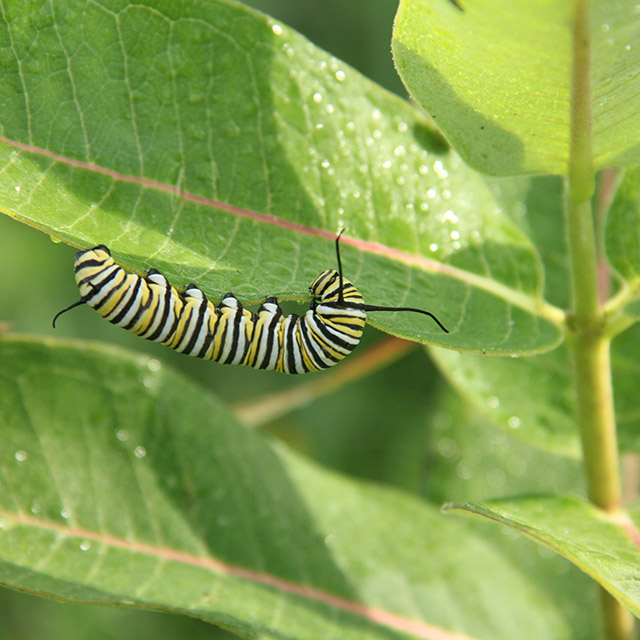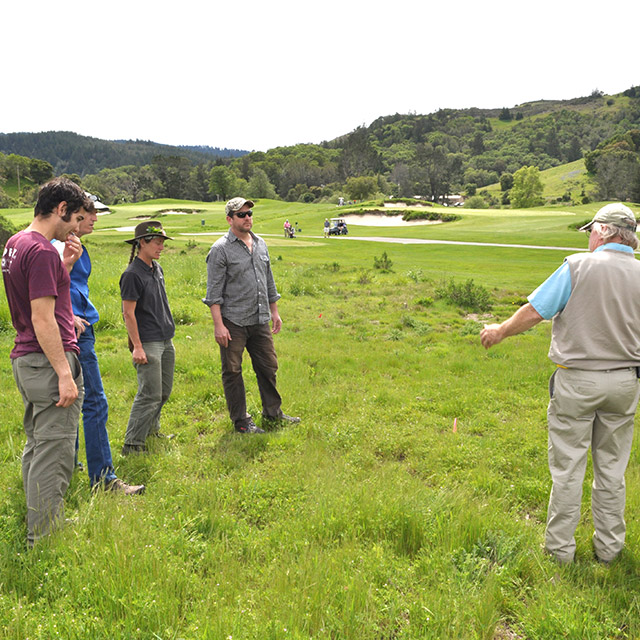Originally published here: https://www.reporterherald.com/2020/02/01/tpc-colorado-mixing-environmental-stewardship-and-golf-management/
This spring, TPC Colorado will add to its acres of milkweed to provide habitat for the declining monarch butterfly populations — part of a larger effort to weave environmental practices into the operations of the golf course in Berthoud.
Managers have planted native grasses, are conserving water through specific equipment and native plants, counting species, building bird boxes and reducing pesticide use through integrated pest management.
These efforts and more earned the golf course and its superintendent, Michael Cooper, recognition in environmental planning from the Audubon Cooperative Sanctuary Program through Audubon International. And by the end of 2020, Cooper expects that the golf course will have completed its plans and earned certification through Audubon.
“Golf courses get a negative rap for using a lot of water,” said Cooper. “We’re conserving the use of water, and we’re also providing a habitat for wildlife and for people.”

The 200-acre golf course that opened in 2018 is home to elk, coyotes, foxes, bald eagles, osprey, blue herons and many other species as well as 18 holes of premier golf. The goal is for both uses to coexist, native grasses and habitats bordering manicured greens.
Of the 200 acres, 110 are irrigated turf, 82 acres are planted in native grasses, particularly fine fescue, as naturalized areas and eight surface acres make up the course’s irrigation pond. This year, Cooper said the course will install eight diffusers in the body of water to naturally reduce algae and prevent the need for use of chemicals.
The plans in place through Audubon International for certification as well as best management practices for Colorado golf courses and for TPC affiliated courses get into the nitty-gritty, including the type of sprinkler heads chosen to not waste water, methods to reduce the use of chemicals and actions to conserve the amount of water used.
The efforts also tie into providing wildlife habitat. The native grasses in the course’s naturalized areas attract elk herds in the winter. The habitat also provides home and food sources to eagles and other raptors. And by participating in Monarchs in the Rough, a program designed by Audubon and the Environmental Defense Fund, TPC managers will plant additional milkweed to augment natural occurrences within the golf course to attract monarch butterflies.
The effort is aimed at increasing populations of the monarch butterflies, which are as useful as they are beautiful. They are important pollinators as well as a food source for birds, small mammals and other insects, according to information on the National Park Service website.
But with declining habitat, more frequent and severe droughts and the use of pesticides, their populations have been declining. The Monarchs in the Rough program reports a 90% population drop in monarchs over the past 20 years.
By encouraging golf courses to plant milkweed, and providing the seed, the program is working to reverse that trend. TPC has received its seed for the program and expects to plant in May and June.
Course managers also plan to build and install bird boxes to provide nesting space to the mourning dove, northern flicker and barn swallow. They will continue to improve habitat and survey what species are found on the acres, to protect killdeer nesting sites and also plan to raise bees near the maintenance shops with a goal of receiving certification from Audubon by the end of 2020.
“The open space of a golf course is utilized not only by golfers, but is habitat for a variety of wildlife species,” Christine Kane, chief executive office Audubon International, said in a press release. “We welcome TPC Colorado‘s commitment to the environment and to managing the golf course with wildlife in mind.”
She added, “The Audubon Cooperative Sanctuary Program benefits both people and wildlife. It’s a great way for the managers of developed properties and environmental organizations to work together to become better stewards of land and natural resources.”
The measures will be good for the environment and for wildlife, and the natural habitat also improves the experience for the golfers who will tee off with a prime view of the mountains and of Lonetree Reservoir. After all, Cooper said, there’s nothing like seeing majestic bald eagles perched in a tree while you’re golfing.
He added, “It’s just cool.”












